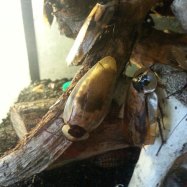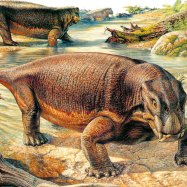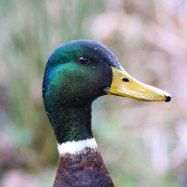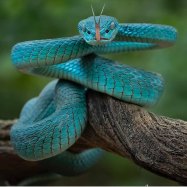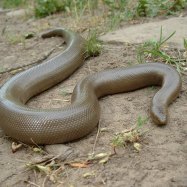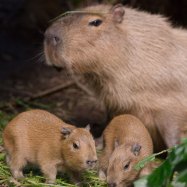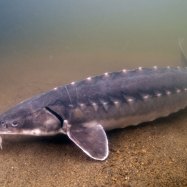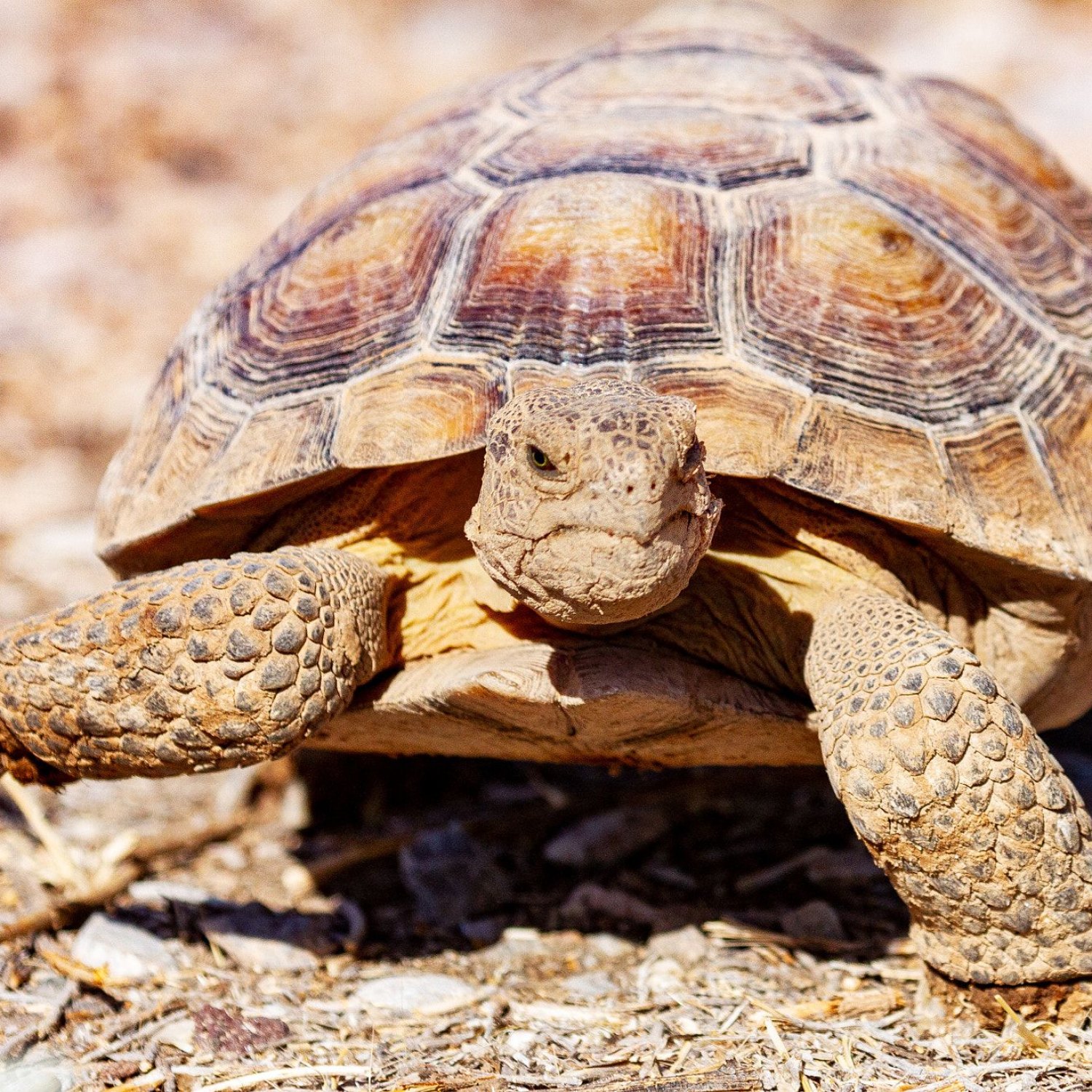
Desert Tortoise
8 to 14 inches (20 to 36 cm)
Discover the amazing world of Desert Tortoises! These fascinating creatures belong to the Testudinidae family and can be found in desert regions. With a unique oval-shaped body and sturdy limbs, they can grow up to 14 inches. Watch them roam the desert with their iconic high, domed carapaces!
Animal Details Summary:
Common Name: Desert Tortoise
Kingdom: Animalia
Habitat: Deserts, grasslands, and scrublands
The Majestic Desert Tortoise: Surviving in the Harshest Environments
The desert is often perceived as an inhospitable place, with its scorching hot temperatures, arid landscapes, and unpredictable weather. Yet, despite these challenges, there is one creature that has not only survived but thrived in these harsh environments - the Desert Tortoise.Also known by its scientific name, Gopherus agassizii, the Desert Tortoise is a fascinating animal that has adapted to survive in some of the most extreme conditions on Earth. In this article, we will dive into the world of the Desert Tortoise, exploring its physical attributes, behavior, and unique adaptations that have allowed it to thrive in the desert Desert Tortoise.
The Desert Tortoise: A Member of the Reptile Family
The Desert Tortoise belongs to the kingdom Animalia, the phylum Chordata, and the class Reptilia. Within the class Reptilia, it is classified under the order Testudines, and the family Testudinidae. This family of tortoises is known for their land-dwelling and herbivorous nature, and the Desert Tortoise is no exception.Habitat and Distribution
As the name suggests, the Desert Tortoise is found in desert regions, specifically in the southwestern United States and northern Mexico. These areas include the Mojave, Sonoran, and Chihuahuan deserts, as well as grasslands and scrublands. Their habitat ranges from flat, sandy areas to rocky slopes and canyons, where they can dig burrows to find shelter and protection from extreme temperatures.In the wild, Desert Tortoises are known to have a fairly limited range, with a home range of around 3.6 square miles (9.3 square km) Douc. However, during the mating season, males can travel up to 7.5 miles (12 km) to find a mate.
Nutrition and Adaptations
Desert Tortoises are herbivores, feeding mainly on a variety of plants, including cacti, grasses, and wildflowers. Their unique adaptations allow them to survive on a diet that is low in nutrients and water. For example, their digestive system is highly efficient at extracting nutrients from food, and their kidneys can concentrate urine to retain the water they need.One of the most apparent adaptations of the Desert Tortoise is its ability to store water in its bladder, which can make up 40% of its body weight. This adaptation enables them to survive for long periods without access to water, making them perfectly suited for the desert environment.
A Sturdy and Remarkable Creature
The Desert Tortoise has a distinct body shape that helps them survive in the desert. Their large, domed carapace, or shell, provides protection from predators, such as coyotes, and also helps regulate their body temperature. The high, domed shape of their shell also allows them to retract their head, legs, and tail fully when threatened, providing them with added protection.On average, Desert Tortoises grow between 8 to 14 inches (20 to 36 cm) in length and can weigh between 15 to 20 pounds (6.8 to 9.1 kg). However, in some cases, they can reach up to 30 pounds (14 kg). Their sturdy limbs, with sharp claws, allow them to dig burrows and move through the rocky terrain with ease.
Body Coloration
The Desert Tortoise's shell, or carapace, is yellowish to brownish in color, with a high, domed shape. The shell is made of keratin, the same protein found in human fingernails and hair, and is divided into scutes, which are the individual plates on the shell. These scutes can help identify the Desert Tortoise's age, as they continue to grow one each year.Their plastron, or underside, is a pale yellow color, and this also contributes to protecting their vital organs from predators and extreme temperatures. The plastron also has a distinctive hinged section, which is a unique adaptation to allow the Desert Tortoise to completely close its shell.
The Fascinating Behavior of the Desert Tortoise
Despite their slow-moving nature, Desert Tortoises have some interesting behaviors that contribute to their survival in the desert. For example, they are most active during the early morning and late afternoon, when the temperature is cooler, and they can dig into the ground during the hottest part of the day to escape the intense heat.During winter, when the temperature drops, Desert Tortoises go into a state of brumation, which is similar to hibernation. They bury themselves in the ground and live off their stored fat and water until spring arrives.
Desert Tortoises also have a lifespan of around 50 to 80 years, making them one of the longest-lived reptiles in the world. Their slow growth and life expectancy mean that they have a low reproductive rate, which contributes to their vulnerability.
Conservation Status and Threats
In the past, Desert Tortoises were hunted for their meat and shells, and their habitat was destroyed due to urban development and mining activities. These actions have resulted in a decline in their population, and the Desert Tortoise is now listed as a threatened species by the United States Fish and Wildlife Service.Other threats to their survival include predators, such as domestic dogs, ravens, and roadrunners, which can prey on young tortoises and their eggs. Climate change is also a significant threat, as changes in temperature and rainfall patterns can affect their food sources and availability of water.
Conservation Efforts
Several conservation efforts are in place to protect and preserve the Desert Tortoise. For example, in 1990, it became illegal to take a Desert Tortoise from the wild as a pet. There are also initiatives to educate the public on how to safely coexist with these animals and protect their habitat.Scientists and researchers are also conducting studies to understand the Desert Tortoise's behavior and biology, which can inform conservation efforts and help mitigate threats to their survival.
The Role of the Desert Tortoise in the Ecosystem
The Desert Tortoise plays a vital role in the desert ecosystem. As they forage on various plants, they act as seed dispersers, helping to spread plant species and promote diversity. They also create burrows that provide shelter and nesting sites for other animals, such as rodents, lizards, and birds.Their long lifespan and low reproductive rate contribute to the delicate balance of the desert ecosystem, making them a crucial keystone species. Losing the Desert Tortoise would disrupt the ecosystem's balance and have severe consequences for other plants and animals in the area.
In Conclusion
The Desert Tortoise is a majestic creature that has adapted to survive in one of the harshest environments on Earth - the desert. Its unique adaptations, sturdy body, and fascinating behavior make it an essential species in the ecosystem. However, with human activities and climate change threatening their survival, it is crucial to continue efforts to protect and preserve this iconic reptile for future generations to appreciate and admire.

Desert Tortoise
Animal Details Desert Tortoise - Scientific Name: Gopherus agassizii
- Category: Animals D
- Scientific Name: Gopherus agassizii
- Common Name: Desert Tortoise
- Kingdom: Animalia
- Phylum: Chordata
- Class: Reptilia
- Order: Testudines
- Family: Testudinidae
- Habitat: Deserts, grasslands, and scrublands
- Feeding Method: Herbivore
- Geographical Distribution: Southwestern United States and northern Mexico
- Country of Origin: United States and Mexico
- Location: Desert regions
- Animal Coloration: Yellowish to brownish carapace (shell) with a pale yellow plastron (underside)
- Body Shape: Oval-shaped with a high, domed carapace and sturdy limbs
- Length: 8 to 14 inches (20 to 36 cm)
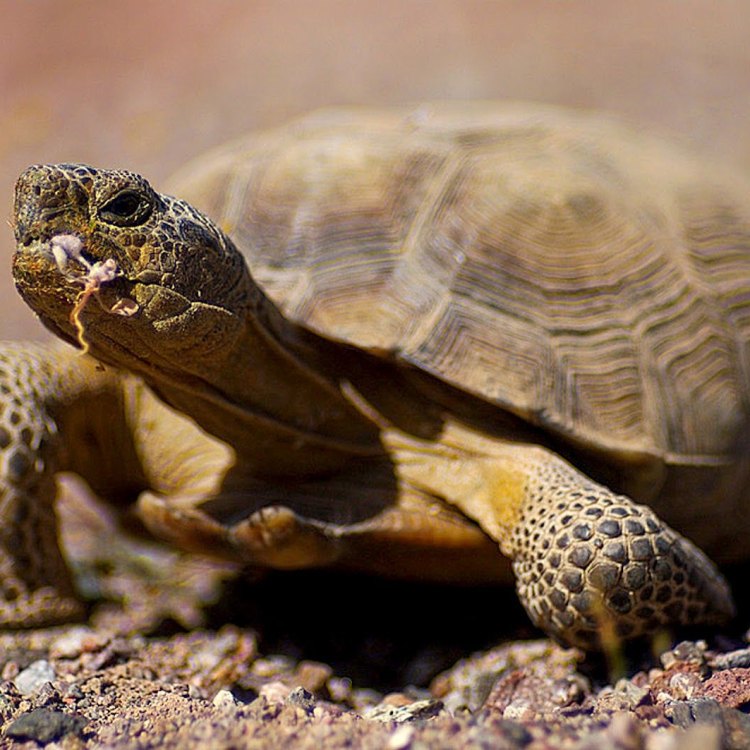
Desert Tortoise
- Adult Size: Adults can reach up to 15 inches (38 cm) in length and weigh between 8 and 15 pounds (3.6 to 6.8 kg)
- Average Lifespan: 50 to 80 years
- Reproduction: Sexual
- Reproductive Behavior: Mating occurs between April and May
- Sound or Call: Typically silent but may make hissing or grunting sounds when threatened
- Migration Pattern: Non-migratory
- Social Groups: Generally solitary, but may gather in groups during the breeding season
- Behavior: Mainly active during the day, spend hot hours in burrows
- Threats: Habitat loss, predation, disease, illegal collection, and vehicle collisions
- Conservation Status: Vulnerable
- Impact on Ecosystem: Important for seed dispersal and burrow construction
- Human Use: Illegal pet trade, used in traditional medicine, and as a food source
- Distinctive Features: Large size, high-domed shell, thick and scaly legs
- Interesting Facts: They can go without drinking water for a year, they have a specialized bladder that allows them to store water for later use, their shell helps them to conserve water and provides protection
- Predator: Coyotes, foxes, dogs, and ravens
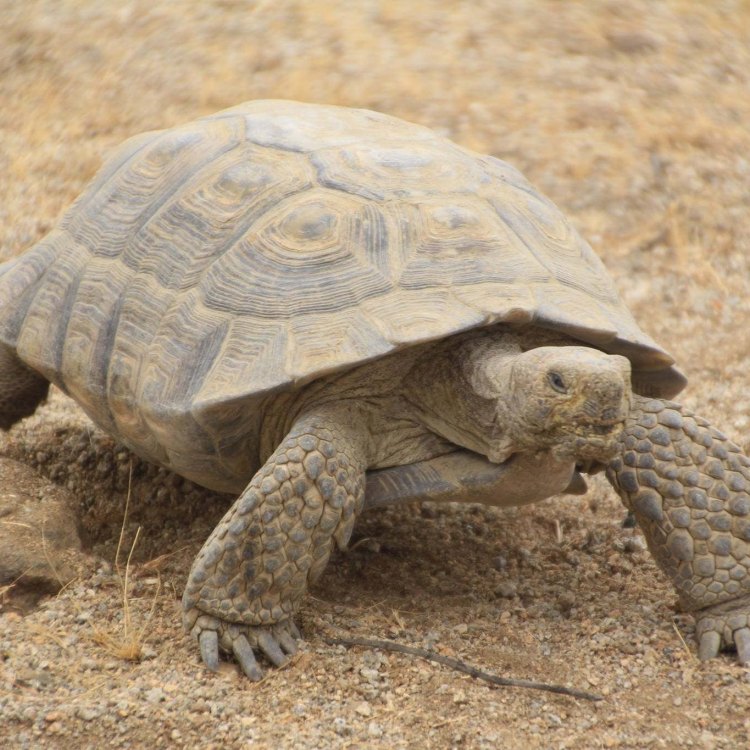
Gopherus agassizii
The Amazing Desert Tortoise: A Unique and Endangered Species
In the vast and unforgiving deserts of the southwestern United States, there is a creature that has captured the hearts and minds of many. The Desert Tortoise, also known as Gopherus agassizii, is a reptile that has adapted to the harsh and extreme conditions of its habitat. With its distinctive features and fascinating behavior, the desert tortoise is a truly remarkable and unique species. However, despite its resilience and tenacity, the desert tortoise is facing numerous threats, making it a vulnerable species in need of conservation efforts PeaceOfAnimals.Com.Adult Size:
One of the most striking characteristics of the desert tortoise is its size. Adults can reach an impressive length of up to 15 inches (38 cm) and weigh between 8 and 15 pounds (3.6 to 6.8 kg). This size allows them to effectively navigate through the harsh terrain and find shelter in the many crevices and burrows in the desert.
Average Lifespan:
Another impressive feat of the desert tortoise is its long lifespan, with an average of 50 to 80 years. It is not uncommon for these creatures to live for over 100 years in the wild. This longevity is due to their ability to conserve water and energy, making them well-equipped to survive in the harsh desert environment.
Reproduction:
The desert tortoise is a sexual species, meaning that they require a male and female to reproduce Dumerils Boa. Mating occurs between April and May, with males actively seeking out females during this time. Once a female is fertilized, she will dig a nesting burrow and lay her eggs, which will hatch after 90 to 120 days. The young tortoises are fully independent from birth, and the survival rates are low, with only a small percentage reaching adulthood.
Reproductive Behavior:
The courting and mating behaviors of the desert tortoise are fascinating to observe. Males will use head bobbing, circling, and pushing to compete for a female's attention. Once the female has chosen a suitable mate, they will engage in a slow-motion mating ritual, with the male mounting on top of the female. This reproductive behavior is crucial for ensuring the continuation of the species, as the desert tortoise's population is relatively low.
Sound or Call:
Typically, the desert tortoise is a silent creature, but they may make hissing or grunting sounds when threatened or disturbed. These vocalizations are a defense mechanism to intimidate predators and warn other desert tortoises in the area.
Migration Pattern:
Unlike other species of tortoises, the desert tortoise is non-migratory. They have a limited home range and will primarily stay within a few miles of their burrows. This behavior is likely due to the scarcity of resources in the desert, making it more beneficial for them to stay in one area rather than expend energy moving to another.
Social Groups:
The desert tortoise is generally a solitary species, spending most of its time alone. However, during the breeding season, they may gather in groups, called aggregations, to mate and forage for food. These aggregations are also beneficial for increasing the chances of finding a suitable mate.
Behavior:
The desert tortoise is mainly active during the day, as they are ectothermic, meaning they rely on external sources of heat to regulate their body temperature. During the hottest hours of the day, they seek refuge in their burrows, which can be up to 10 feet deep, to escape the scorching desert sun. They are herbivores and primarily feed on plants, such as cacti, grasses, and wildflowers.
Threats:
Despite their remarkable adaptations and behaviors, the desert tortoise faces a multitude of threats. Habitat loss due to urbanization, agriculture, and off-road vehicle use is one of the most significant threats to their survival. Predation by coyotes, foxes, dogs, and ravens also poses a significant risk to their population. Additionally, illegal collection for the pet trade, use in traditional medicine, and as a food source have greatly impacted the species' numbers. Accidental vehicle collisions are also a significant threat, as desert tortoises are often found crossing roads, making them vulnerable to being struck by cars.
Conservation Status:
Due to these threats and a declining population, the desert tortoise is currently listed as Vulnerable on the IUCN Red List. This means that the species is facing a high risk of extinction in the wild. Several conservation efforts are in place to protect the desert tortoise, such as the Desert Tortoise Recovery Plan, which aims to conserve and recover the species' population and habitat.
Impact on Ecosystem:
The desert tortoise plays a crucial role in its ecosystem. As they forage for food, they help to disperse seeds, aiding in plant growth and diversity. Their burrows also provide crucial shelter for other animals, such as mammals, birds, and insects. In addition to their ecological impact, the desert tortoise is also valued by indigenous cultures as a symbol of strength and longevity.
Human Use:
Unfortunately, despite their protected status, the desert tortoise is still exploited for human use. The illegal pet trade, used in traditional medicine, and as a food source have contributed to the species' decline. It is essential for humans to understand the impacts of these actions and to respect the desert tortoise's role in the ecosystem.
Distinctive Features:
One cannot talk about the desert tortoise without mentioning its distinctive features. Their large size, high-domed shell, and thick and scaly legs make them easy to distinguish from other species of tortoises. Their shell serves as a vital adaptation, protecting them from predators, but also help them to conserve water, as they are able to retract their limbs and head into their shell, minimizing water loss through evaporation.
Interesting Facts:
The desert tortoise is full of fascinating facts and unique adaptations. One of the most astonishing is their ability to go without drinking water for up to a year. They have a specialized bladder that allows them to store water for later use, making them incredibly resilient in times of drought. Their shell also serves as a water-conservation mechanism, as it is covered in a tough layer of keratin that helps prevent water loss.
Predator:
Despite their resilience, the desert tortoise is still vulnerable to predators. In addition to coyotes, foxes, dogs, and ravens, young tortoises are also at risk from ants and insects. The decline in population numbers has also made them an easy target for predators, as their once scattered and dispersed populations are now becoming more concentrated.
In conclusion, the desert tortoise is a unique and resilient species that has fascinated and captivated researchers and nature-lovers for centuries. Their adaptations, behaviors, and role in the ecosystem make them an important and valuable species for conservation efforts. But with numerous threats continuously impacting their survival, it is crucial for humans to take action to protect and preserve this beloved creature. By educating ourselves and others and actively participating in conservation efforts, we can ensure that the desert tortoise continues to roam the deserts for many years to come.
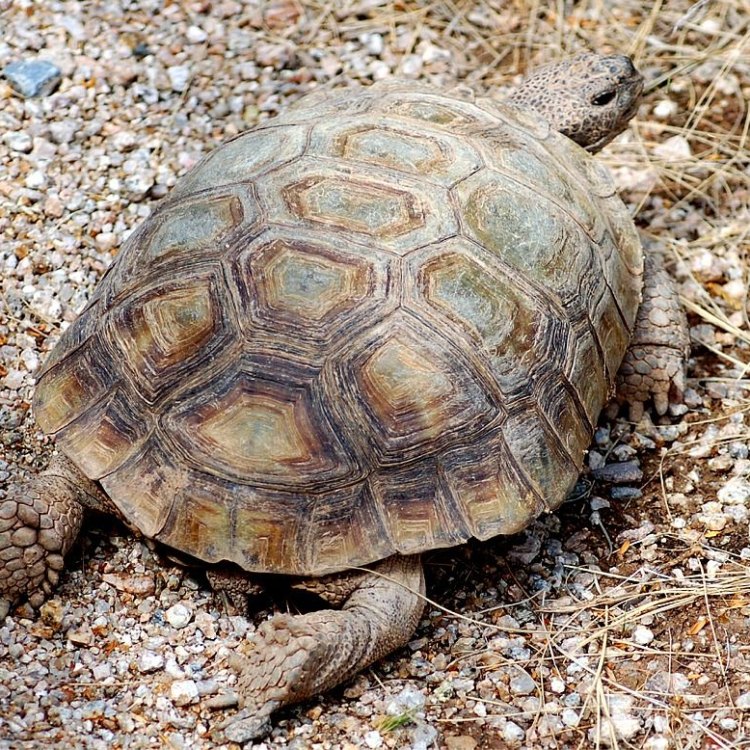
The Majestic Desert Tortoise: Surviving in the Harshest Environments
Disclaimer: The content provided is for informational purposes only. We cannot guarantee the accuracy of the information on this page 100%. All information provided here may change without prior notice.

